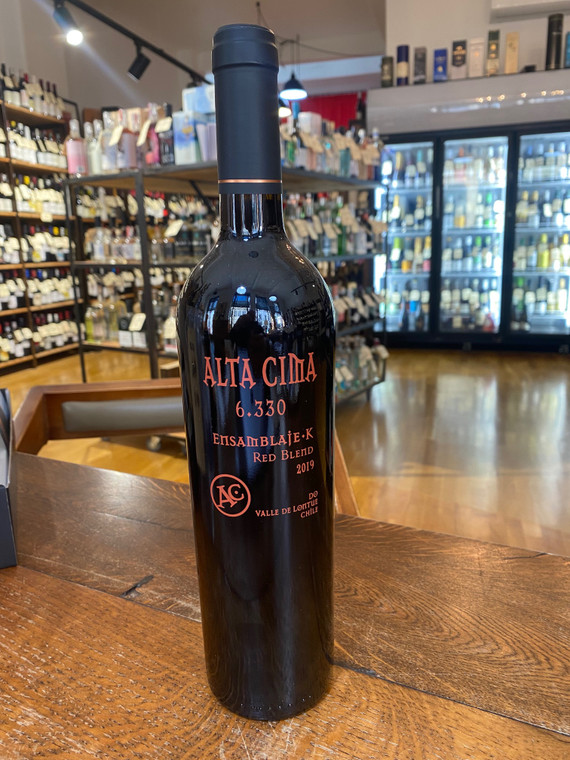
Blend Composition: 72.6% Cabernet Sauvignon; 11.2% Carmenere; 9.1% Syrah; 7.1% Petit Verdot
Tasting notes: Our 6.330 blend harvest has an intense and deep red colour. Complex to the nose, this wine combines fruity aromas such as cranberry, cassis and plum with sweet spices such as vanilla and finishing with some toasted notes. In the mouth, it is full-bodied with an intensely fruity flavour and a long persistence.
Alta Cima Winery
Klaus Schroeder Sr., Alta Cima’s winemaker and founder, started the winery in 2000 on a plot of land he purchased in 1974. Klaus chose the plot because as head winemaker for San Pedro winery, he consistently purchased grapes from the area because of their quality. Specifically, he liked the elegance and structure of the grapes. Klaus Sr. wanted to one day have his one winery where he focused on finesse and softness in his wines, and the grapes from this small part of the Lontue Valley provided perfect fodder for this dream.
Klaus Sr. has been making wine since the mid ‘60s. From a small town in northern Germany, he attended a local agriculture school. He did so well, that Geisenheim University, one of the most prestigious winemaking schools in the world - on par with UC Davis and Montpellier - admitted him in 1959, despite usually not accepting applicants with only agriculture degrees.
After graduating in 1963, Klaus Sr. then worked for 2 years in wineries in Germany. A bout of wanderlust led him to apply to wineries throughout the world. One of the wineries that offered him a job, San Pedro’s in Chile, sparked his interest. Klaus arrived at the winery on October 10th, 1965, his 26th birthday.
After San Pedro’s, he moved to Erasmus and created the first vintages of “Don Maximiano,” a national treasure in Chile. Then he moved to Santa Rita and created “Casa Real,” their flagship wine. The 1989 vintage of that wine is widely considered one of the greatest wines Chile has ever produced.
THE LAND
By 2000, Klaus felt it was time to return to the land he’d bought in 1974 and start his own winery. As mentioned above, he knew that the grapes from his land were excellent. Over the past 18 years, he’s been studying why. Here’s what he’s learned.
Basically, there are three specific ways that air moves over the vineyards. Two of these movements can be categorized as winds, the third as more of a gentle roll. The vineyards sit in a very specific part of the Lontue valley with unique topographic qualities. The wind movements all meet at this particular place.
Alta Cima’s vineyards lie at the tip of a small mountain corridor juts inland from the Pacific ocean. The Lontue river flows across the tip of the range from the south, then turns quickly towards the ocean, creating the Lontue valley. This means the valley is open at the end that meets the ocean, allowing ocean winds to glide through the valley in an eastwardly direction.
At the same time, a second prevailing wind blows from the south, funneled by the Andes, the “cordillera de la costa” - the smaller mountain range that runs along the coast - and the corridor described above. These two winds meet right where the vineyards are planted. In the morning, this creates a fog that protects the grapes and freshens them. This fog blows off around midday, and for a very small window of only a few hours, the grapes have enough heat to ripen.
In the afternoon, the third air movement comes into play, as a second fog descends from the Andes, again freshening and cooling the grapes. Crucially, it very rarely rains throughout the summer and fall, despite the constant fog.
The final piece of the climate puzzle is one that much of South America has going for it: drastic changes in temperature from day to night. During the day, temperatures exceed 90 degrees. At night, they drop as low as the mid 40s. This combination means the grapes have enough access to heat to fully ripen, but also maintain the acidity needed to create wines with elegance and finesse.
Chile







